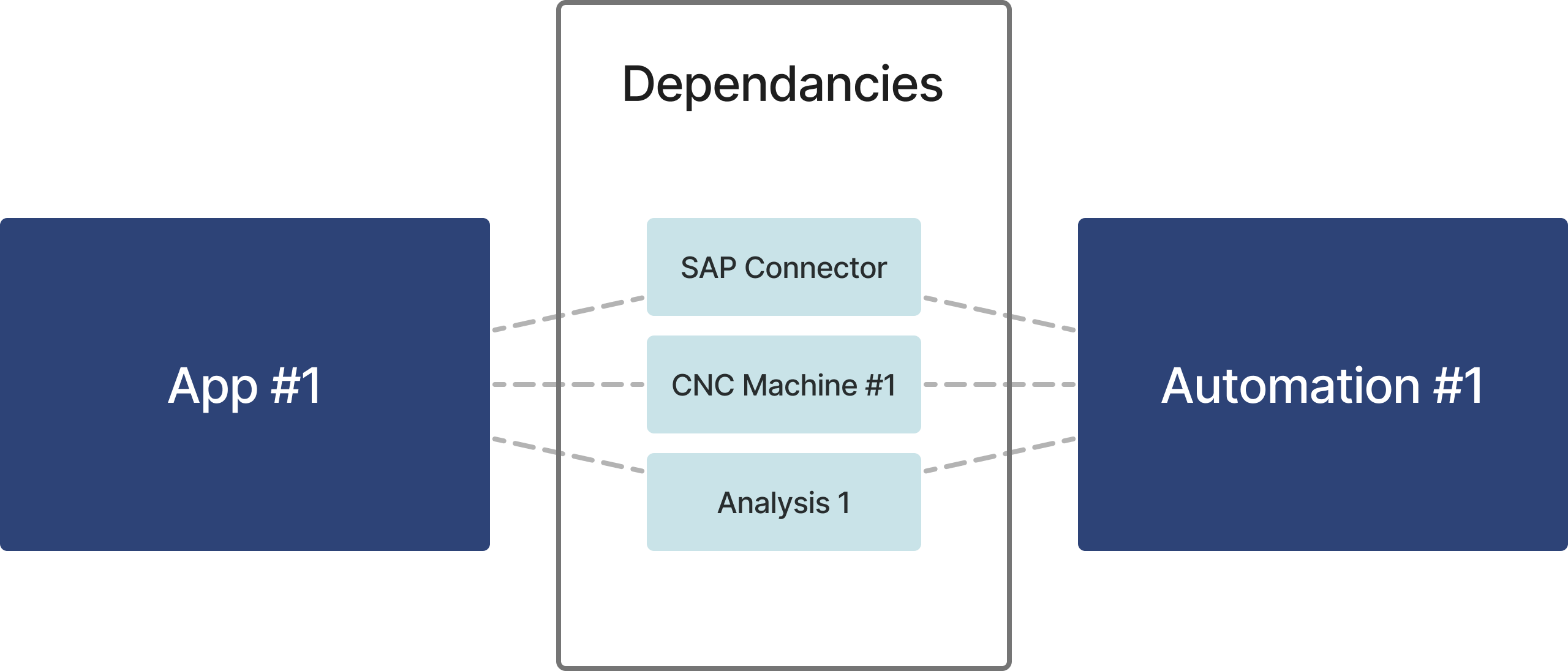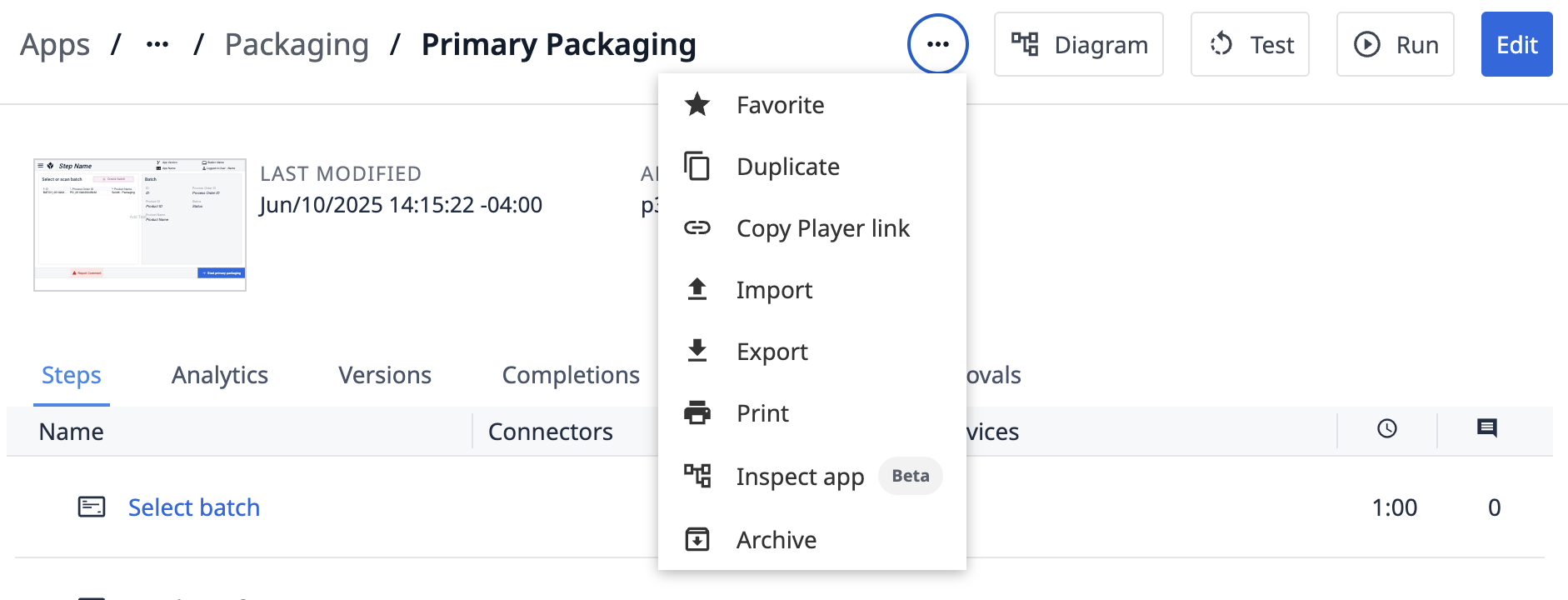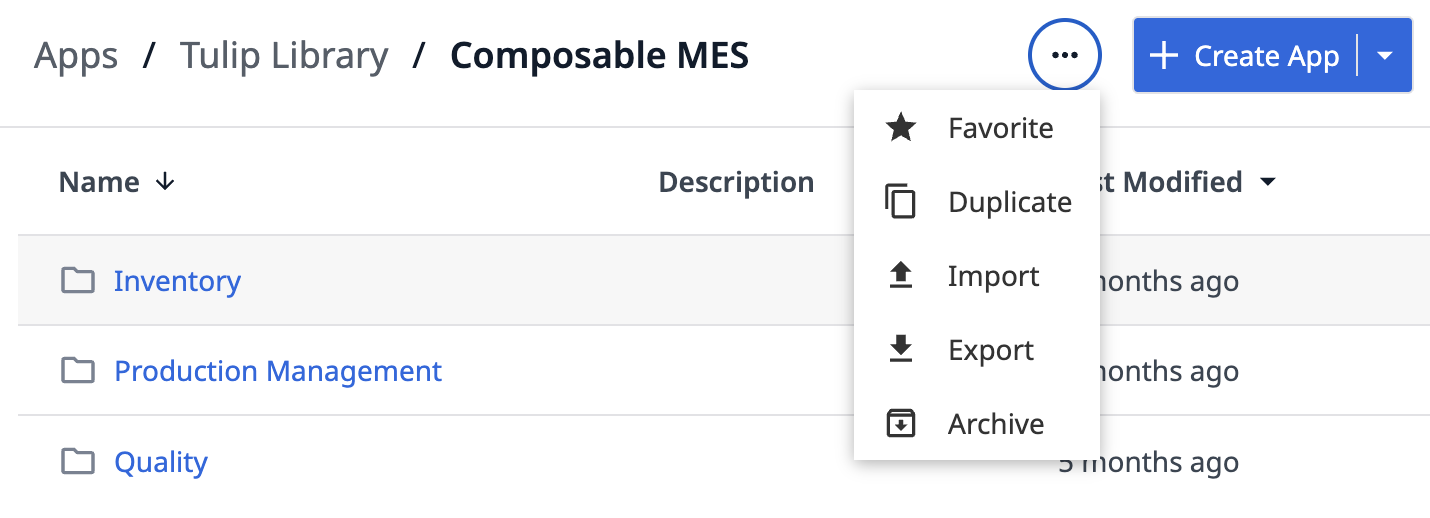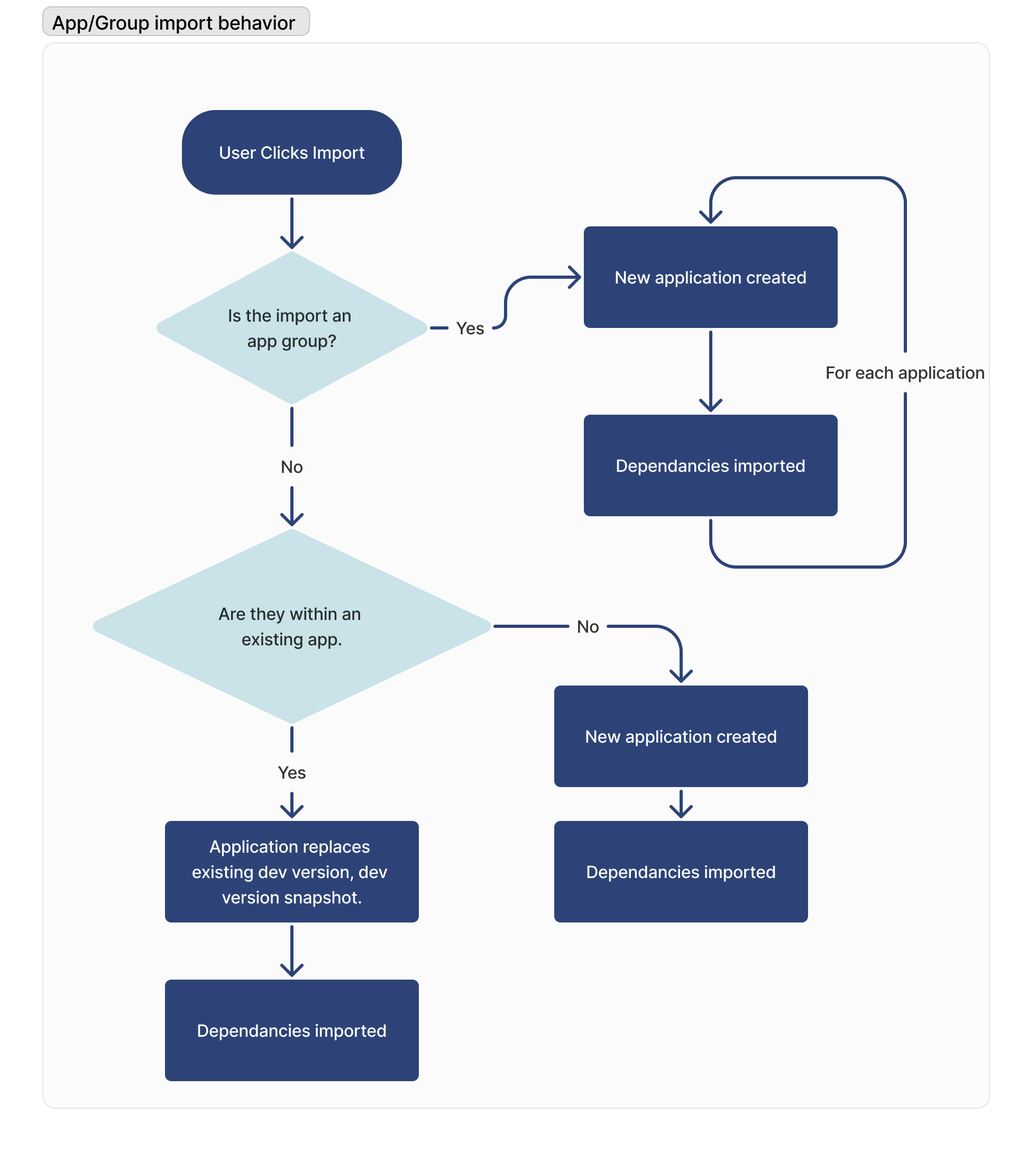このガイドでは、Tulipインスタンスまたはワークスペース間でコンテンツを移動する方法を説明します。
Users on Enterprise plans and above.
多くのTulipユーザーは、複数のWorkspaceまたはインスタンスをTulipデプロイメント全体で利用することを選択します。この2つの最も一般的な理由は次のとおりです。1つのプラント内で、アプリ開発のために開発用、テスト用、プロダクション用のインスタンスを使用する。
このため、Tulipデプロイメント全体でコンテンツを移動する方法が必要になります。Tulipには、コンテンツを移動するための5つの方法があります:アプリとその依存関係をまとめて移動2.**オートメーションのインポート/エクスポート:**オートメーションとその依存関係をまとめて移動3.テーブルレコードのインポート/エクスポート{target =_blank}:テーブルレコードをあるテーブルから別のテーブルに移動する4。**コネクタのインポート/エクスポート:**コネクタを個別にエクスポートします5。Enterprise App Exchange{ target=_blank}:市民開発者が、合意されたアプリ標準の最新バージョンをインポートできるようにする正式な方法。
この記事では、ポイント1と2に焦点を当てる。
サイト間でコンテンツを転送することで、1つのサイトで行われた作業がすべてのサイトで共有され、Tulipで価値を提供するために必要な時間が短縮されます。
インポート/エクスポートの基礎
アプリケーションやオートメーションは単独で動作するわけではなく、さまざまなサポート資産に依存しています。
オートメーションはコネクタに依存し、アプリケーションはマシンに依存します。これらのサポートコンポーネントは依存関係として知られています。
アプリケーションがエクスポートされると、その依存関係も収集され、一緒にエクスポートされます。ただし、すべての依存関係がエクスポートに含まれるわけではありません。
依存関係
一般に、依存関係とは、アプリケーションまたはオートメーション間で共有でき、アプリケーションまたはオートメーションで明示的に参照できるコンポーネントのことです。コネクター* マシン* ユーザー* アナリティクス* テーブル* などです。
 {height=""幅="800"}。
{height=""幅="800"}。
ルールのエクスポート
エクスポートする前に、どのアセットがアプリケーションやオートメーションで使用され、一緒にエクスポートされるべきかを評価することが重要です。特定のアセットがアプリケーションと一緒にエクスポートされるかどうかについては、複雑なルールがあります。
ルールのインポート
インポート中、アセットがインポートサイトに既に存在する場合、依存関係の重複を避けることが目標です。
オートメーション インポート/エクスポート
オートメーションをエクスポートする唯一の方法は、個々のオートメーションの概要ページから行うことです。
 {height="" width="500px"}.
{height="" width="500px"}.
 {height="" width="500px"} オートメーションのトップページから、オートメーションをインポートすることができます。
{height="" width="500px"} オートメーションのトップページから、オートメーションをインポートすることができます。
アプリのエクスポート方法
このセクションでは、Tulipデプロイメント全体にアプリを移動する前に、アプリとアプリのバージョンを選択するさまざまな方法について詳しく説明します。
単一アプリのエクスポート
単一のアプリの開発バージョンをエクスポートできます。アプリ概要ページのトップからアクセスできます:
 {height=""幅="500px"}からアクセスできます。
{height=""幅="500px"}からアクセスできます。
アプリバージョンのエクスポート
 {height="" width="500px"} アプリの公開バージョンを1つエクスポートできます。
{height="" width="500px"} アプリの公開バージョンを1つエクスポートできます。
アプリグループのエクスポート
 {height="" width="500px"} アプリグループの概要ページから、アプリグループ全体を一度にエクスポートできます。
{height="" width="500px"} アプリグループの概要ページから、アプリグループ全体を一度にエクスポートできます。
アプリのインポート方法
このセクションでは、Tulipデプロイメント内でコンテンツを移動するためのさまざまな方法と、それぞれの長所/短所について詳しく説明します。
各インポート方法は、上記の対応するアプリのエクスポートと同じ場所からアクセスできます。
アプリのインポート
アプリを移動するための最も一般的な方法です。ルールはナレッジベースのこのセクションの記事で説明されています。これにより、開発バージョンのみの、全く新しいアプリが作成されます。
アプリグループのインポート
アプリを移動するこの方法は、上記の方法とルールは同じです。1.アプリがグループでインポートされ、グループ内の複数のアプリを参照するアナリティクスがある場合、それらのアナリティクスはグループ内のすべてのアプリを正常に参照し続けます。2.アプリがグループ内の他のアプリへのトランジションを持っている場合、それらのトランジションはインポート時のトリガーロジック内で正常に機能します。
アプリバージョンのインポート
これにより、既存のアプリの開発バージョンを上書きすることができ、そのアプリとすべてのステーションの割り当てのバージョン履歴が保持されます。以前の開発バージョンは、アプリ内のスナップショットとして保存されます。
新しい開発バージョンの以下の要素は、過去のアプリのバージョンに正常にリンクされます:1.変数2.レコード・プレースホルダー3.署名4.ステップグループ5.ステップ
概要図
この図は上記のセクションを要約したものである。
 {高さ="" 幅="700"}。
{高さ="" 幅="700"}。
その他の資料
エクスポートおよびインポート時に各アセットがどのように処理されるかについては、以下の資料に詳細が記載されています:

